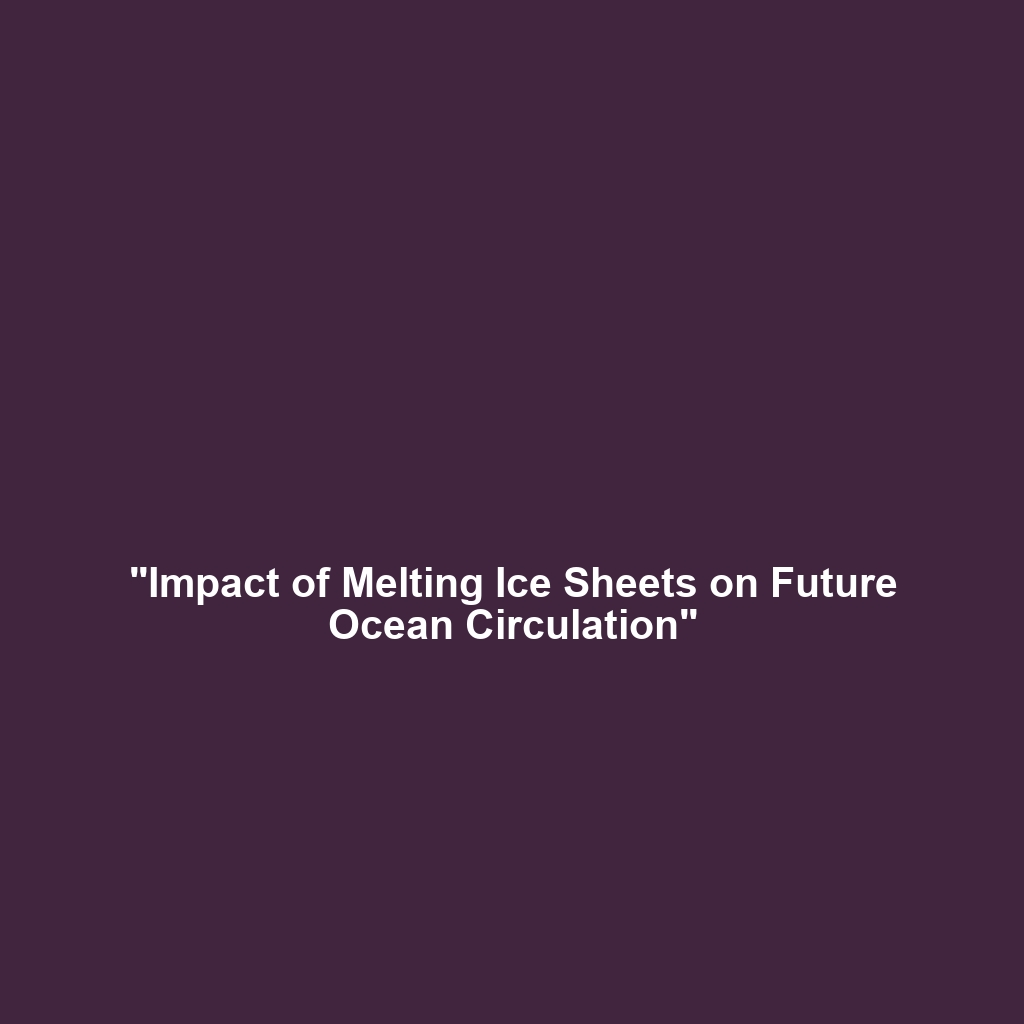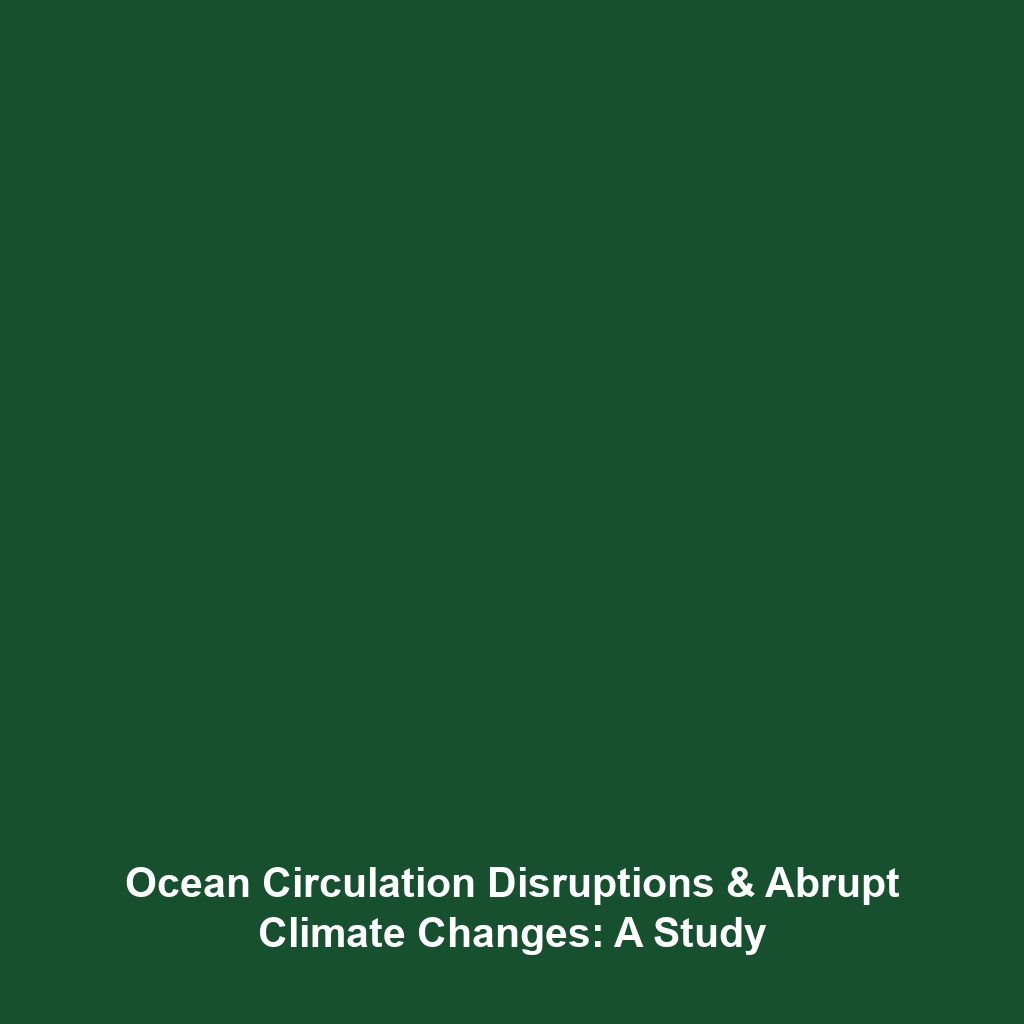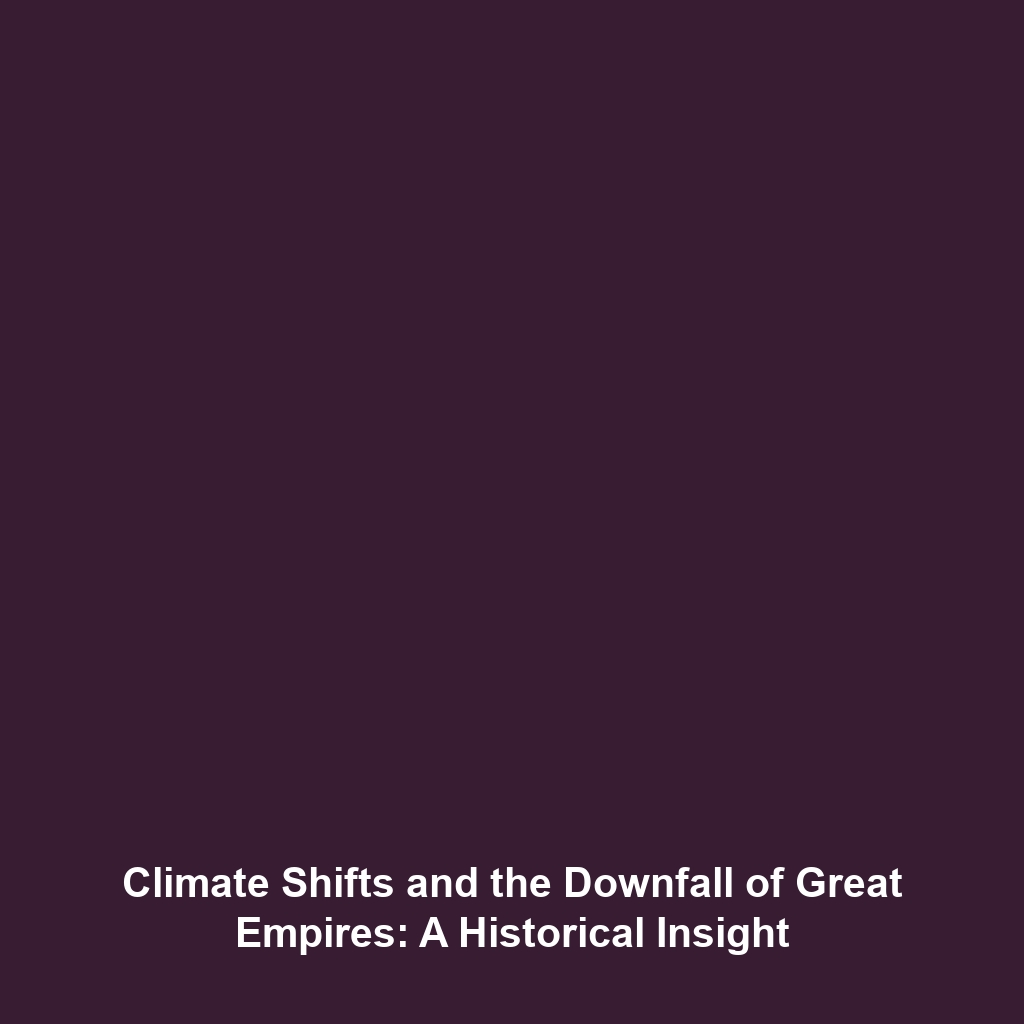How Melting Ice Sheets Could Affect Ocean Circulation in the Future
Introduction
The phenomenon of melting ice sheets is not only a striking indicator of climate change but poses profound implications for ocean circulation and the broader narrative of Climate History. As ice sheets retreat due to rising global temperatures, the consequent influx of freshwater into oceans is expected to disrupt established patterns of thermal and salinity gradients, which play a critical role in driving ocean currents. Understanding these dynamics is crucial for predicting future climate conditions and their impact on ecosystems worldwide.
Key Concepts
Several key concepts underpin the relationship between melting ice sheets and ocean circulation:
- Thermohaline Circulation: Often referred to as the ocean’s “conveyor belt,” this system of currents is driven by differences in temperature and salinity. Melting ice adds freshwater, which can lower salinity and disrupt circulation.
- Climate Feedback Loops: The alteration of ocean circulation can affect global climate patterns, leading to hotter conditions that further accelerate ice melt.
- Sea Level Rise: The contribution of melting ice sheets to sea levels alters coastlines, impacting human populations and natural habitats.
Applications and Real-World Uses
Understanding how melting ice sheets affect ocean circulation has critical applications in various fields:
- Environmental Policy: Insights from studies can inform policies for climate adaptation and mitigation.
- Navigation and Shipping: Predicting changes in ocean currents can help in optimizing shipping routes.
- Fisheries Management: Altered ocean temperatures and salinity can shift fish populations, requiring adaptive management practices.
Current Challenges
There are several challenges in studying the impacts of melting ice sheets on ocean circulation:
- Data Collection: Comprehensive monitoring of remote ice sheet regions is logistically challenging.
- Model Complexity: Climate models need to accurately reflect the relationships between variables, which requires advanced computational methods.
- Interdisciplinary Collaboration: Integrating perspectives from climatology, oceanography, and policy-making is complex but necessary.
Future Research and Innovations
Future research will likely focus on:
- Advanced Climate Models: Developing prediction models that incorporate the nuanced effects of melting ice on ocean currents.
- Remote Sensing Technologies: Innovations in satellite and drone technology for real-time monitoring of ice sheet dynamics.
- Interdisciplinary Approaches: Promoting collaboration between scientists and policymakers to drive effective climate action.
Conclusion
In summary, melting ice sheets play a pivotal role in ocean circulation changes, significantly influencing global climate patterns and ecosystems. Addressing the implications of these changes within the context of Climate History is crucial for effective climate action. Researchers and policymakers must leverage current advancements and overcome challenges to fully understand and mitigate the impacts of this global issue. For further exploration, visit our articles on ocean circulation and climate policy.


